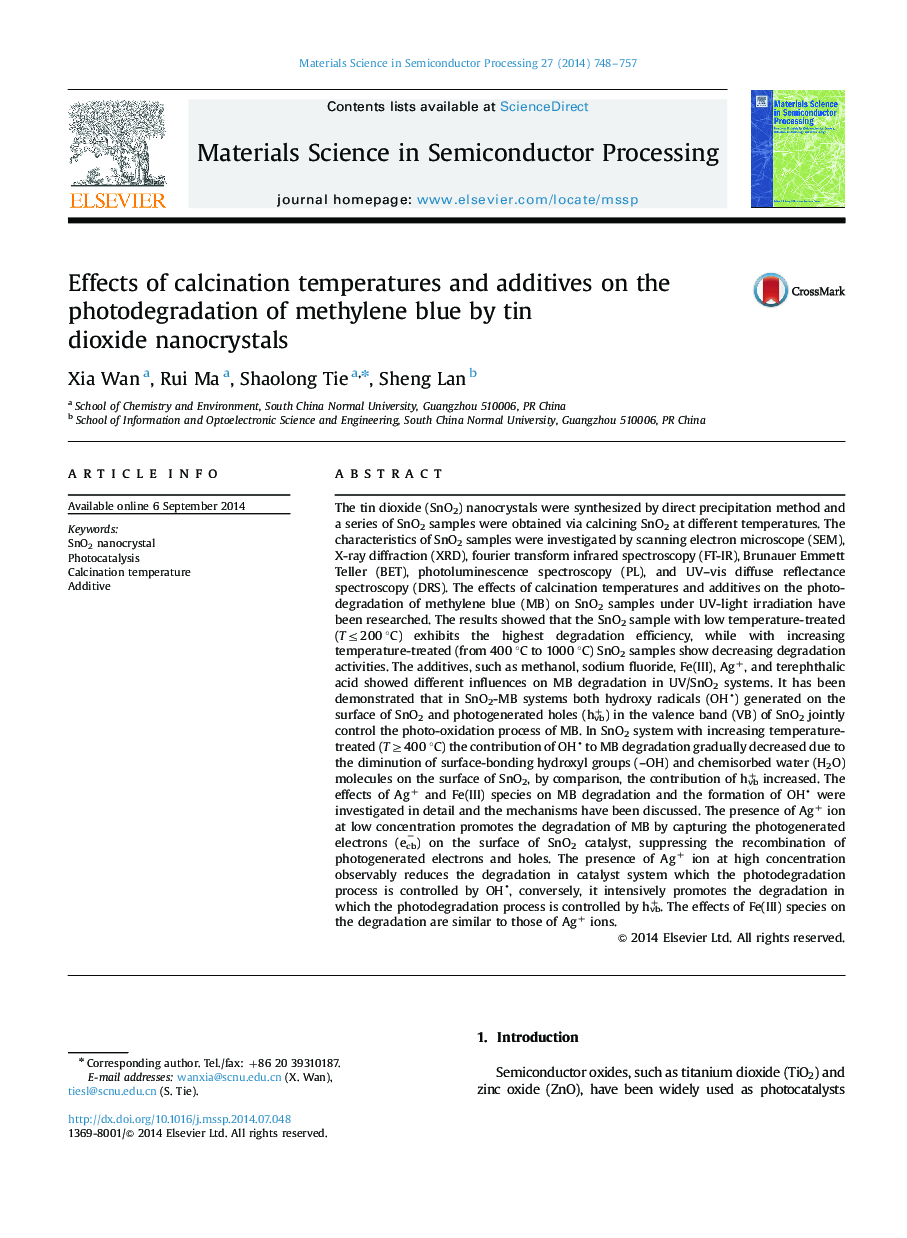| کد مقاله | کد نشریه | سال انتشار | مقاله انگلیسی | نسخه تمام متن |
|---|---|---|---|---|
| 728483 | 1461419 | 2014 | 10 صفحه PDF | دانلود رایگان |
The tin dioxide (SnO2) nanocrystals were synthesized by direct precipitation method and a series of SnO2 samples were obtained via calcining SnO2 at different temperatures. The characteristics of SnO2 samples were investigated by scanning electron microscope (SEM), X-ray diffraction (XRD), fourier transform infrared spectroscopy (FT-IR), Brunauer Emmett Teller (BET), photoluminescence spectroscopy (PL), and UV–vis diffuse reflectance spectroscopy (DRS). The effects of calcination temperatures and additives on the photodegradation of methylene blue (MB) on SnO2 samples under UV-light irradiation have been researched. The results showed that the SnO2 sample with low temperature-treated (T≤200 °C) exhibits the highest degradation efficiency, while with increasing temperature-treated (from 400 °C to 1000 °C) SnO2 samples show decreasing degradation activities. The additives, such as methanol, sodium fluoride, Fe(III), Ag+, and terephthalic acid showed different influences on MB degradation in UV/SnO2 systems. It has been demonstrated that in SnO2-MB systems both hydroxy radicals (OH) generated on the surface of SnO2 and photogenerated holes (h+vb) in the valence band (VB) of SnO2 jointly control the photo-oxidation process of MB. In SnO2 system with increasing temperature-treated (T≥400 °C) the contribution of OH to MB degradation gradually decreased due to the diminution of surface-bonding hydroxyl groups (–OH) and chemisorbed water (H2O) molecules on the surface of SnO2, by comparison, the contribution of h+vb increased. The effects of Ag+ and Fe(III) species on MB degradation and the formation of OH were investigated in detail and the mechanisms have been discussed. The presence of Ag+ ion at low concentration promotes the degradation of MB by capturing the photogenerated electrons (ecb−) on the surface of SnO2 catalyst, suppressing the recombination of photogenerated electrons and holes. The presence of Ag+ ion at high concentration observably reduces the degradation in catalyst system which the photodegradation process is controlled by OH, conversely, it intensively promotes the degradation in which the photodegradation process is controlled by h+vb. The effects of Fe(III) species on the degradation are similar to those of Ag+ ions.
Journal: Materials Science in Semiconductor Processing - Volume 27, November 2014, Pages 748–757
